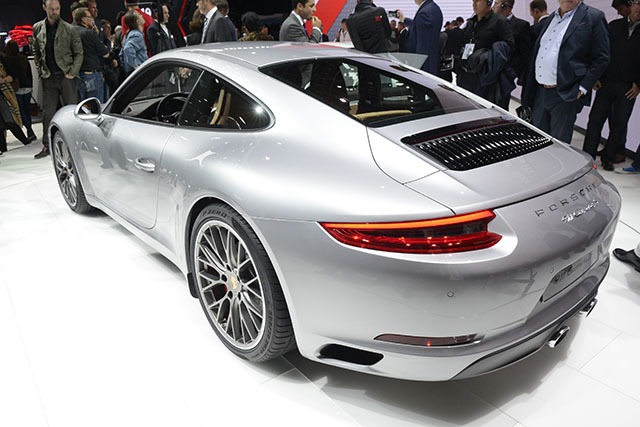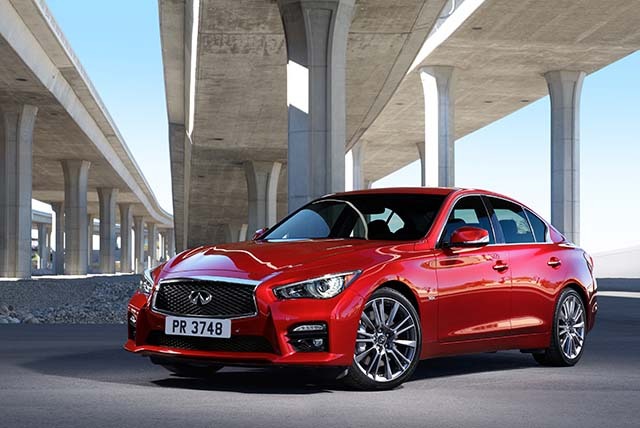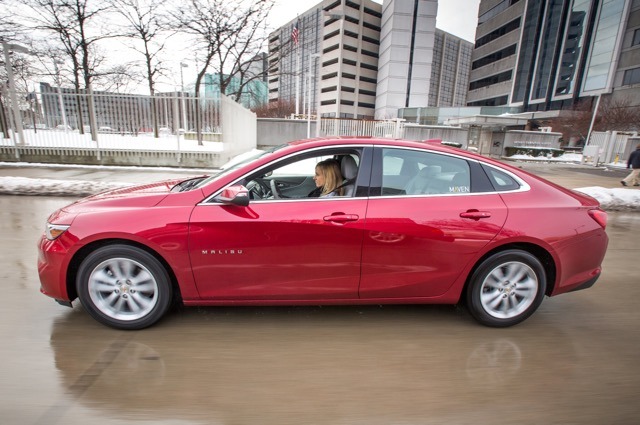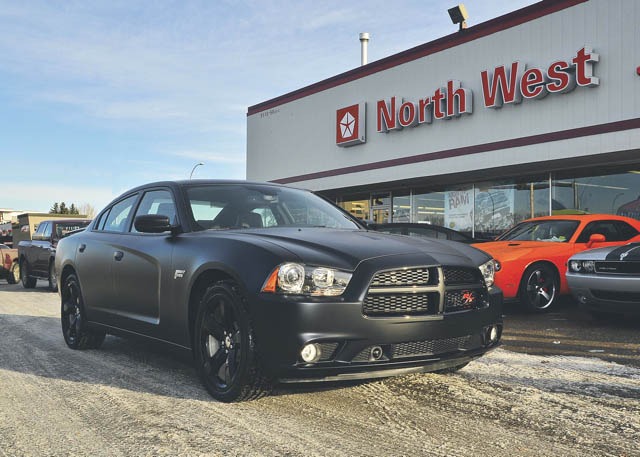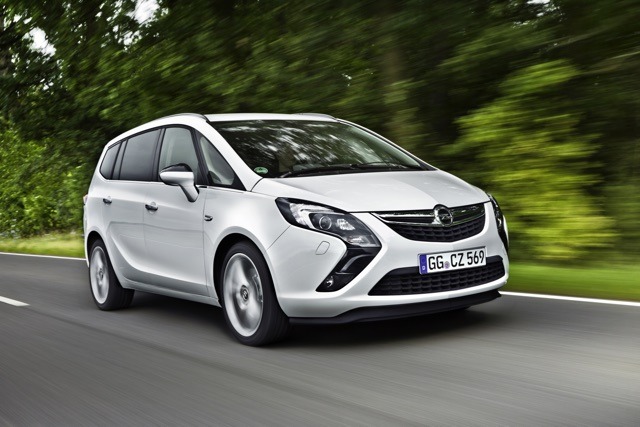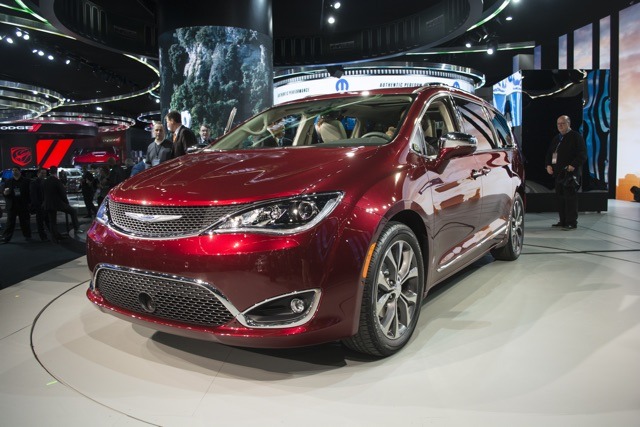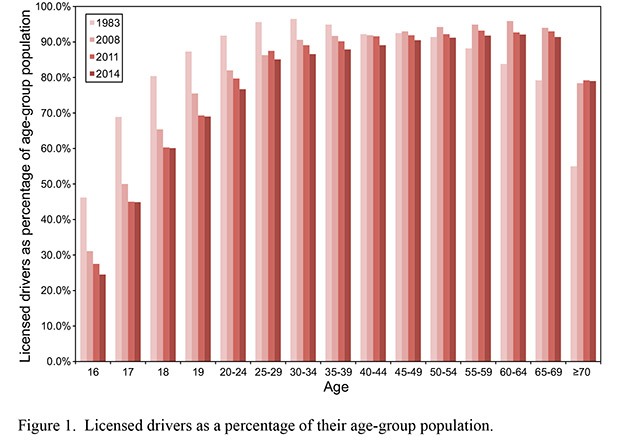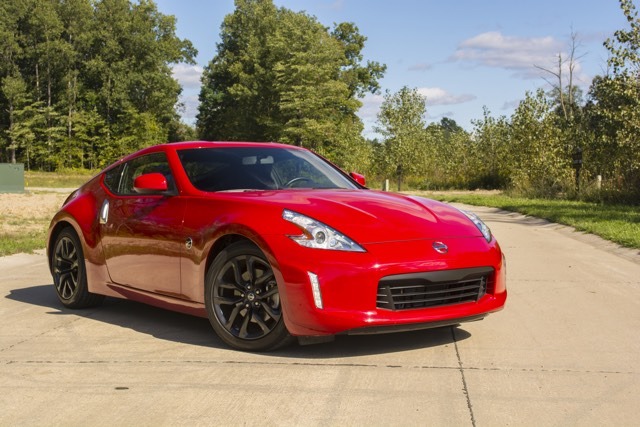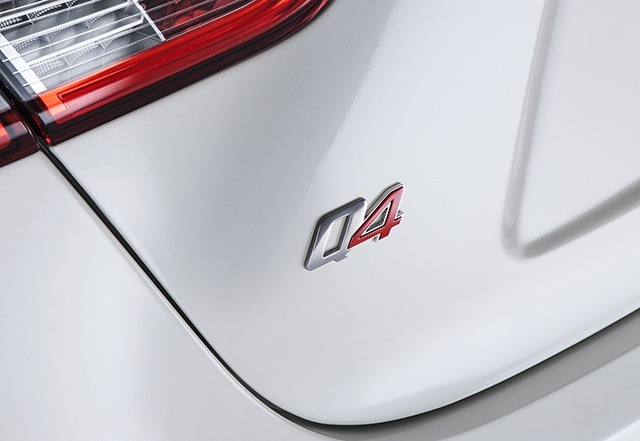-
Posts
32,884 -
Joined
-
Last visited
-
Days Won
5
Content Type
Forums
Articles
Garage
Gallery
Events
Store
Collections
Everything posted by William Maley
-
As stricter fuel economy and emission regulations come into play, automakers are scrambling to figure out solutions that meet the regulations while retaining power. Porsche believes the solution is a plug-in hybrid system for the iconic 911. Car and Driver spoke with Erhard Mössle, engineering boss for the 911 Turbo, Carrera 4, and Targa revealed that Porsche is working on a plug-in hybrid system for the next-generation 911. “We are working on different solutions. We are developing a pure-electric car like the Mission E, and of course we are discussing plug-in solutions as well for the 911,” said Mössle. But trying to fit a hybrid system in the 911 is a difficult task. “I think that takes some time to bring to market, with the packaging problems of the car. There are a lot of problems to solve before [then].” One problem is where to put the batteries for the hybrid system. Do you put them up front? In the floor? Mössle admits this is one of the big issues that is facing the engineering team. This is why the plug-in hybrid model will be with next-generation 911 - due out in 2020. It gives them a clean slate to figure out a solution. Source: Car and Driver View full article
-
As stricter fuel economy and emission regulations come into play, automakers are scrambling to figure out solutions that meet the regulations while retaining power. Porsche believes the solution is a plug-in hybrid system for the iconic 911. Car and Driver spoke with Erhard Mössle, engineering boss for the 911 Turbo, Carrera 4, and Targa revealed that Porsche is working on a plug-in hybrid system for the next-generation 911. “We are working on different solutions. We are developing a pure-electric car like the Mission E, and of course we are discussing plug-in solutions as well for the 911,” said Mössle. But trying to fit a hybrid system in the 911 is a difficult task. “I think that takes some time to bring to market, with the packaging problems of the car. There are a lot of problems to solve before [then].” One problem is where to put the batteries for the hybrid system. Do you put them up front? In the floor? Mössle admits this is one of the big issues that is facing the engineering team. This is why the plug-in hybrid model will be with next-generation 911 - due out in 2020. It gives them a clean slate to figure out a solution. Source: Car and Driver
- 4 comments
-
In 2013, Infiniti made a drastic change. The Japanese luxury automaker announced that it would be scrapping its current nomenclature and going with the Q (cars) and QX (crossovers and SUVs) naming system. The move received a lot of criticism at the time. Even now, the decision to move to Q and QX causes many to wonder why. But this system of Q and QX isn't going anywhere. Infiniti CEO Roland Krüger tells Car and Driver that the company needs to do a better job with communicating the naming system. “We need to build on our heritage and explain it a bit more. The first Infiniti was called Q45, that was the start of the brand, that’s where it comes from. After that a lot of cars were developed with different naming, but what’s important for a luxury brand is that you have an aspirational hierarchy within the brand setting. Hence Q for a limousine, a sporty sedan, and QX for a crossover, with a number that clearly indicates a place within the hierarchy. But let’s say we didn’t explain it quite enough, to be frank, we need to make sure it’s fully understood,” Krüger explained. The last line of Krüger's comment is important. Even though the Q and QX nomenclature system has been around for almost three years, we still have problems remembering which model is which. Source: Car and Driver View full article
- 33 replies
-
In 2013, Infiniti made a drastic change. The Japanese luxury automaker announced that it would be scrapping its current nomenclature and going with the Q (cars) and QX (crossovers and SUVs) naming system. The move received a lot of criticism at the time. Even now, the decision to move to Q and QX causes many to wonder why. But this system of Q and QX isn't going anywhere. Infiniti CEO Roland Krüger tells Car and Driver that the company needs to do a better job with communicating the naming system. “We need to build on our heritage and explain it a bit more. The first Infiniti was called Q45, that was the start of the brand, that’s where it comes from. After that a lot of cars were developed with different naming, but what’s important for a luxury brand is that you have an aspirational hierarchy within the brand setting. Hence Q for a limousine, a sporty sedan, and QX for a crossover, with a number that clearly indicates a place within the hierarchy. But let’s say we didn’t explain it quite enough, to be frank, we need to make sure it’s fully understood,” Krüger explained. The last line of Krüger's comment is important. Even though the Q and QX nomenclature system has been around for almost three years, we still have problems remembering which model is which. Source: Car and Driver
- 33 comments
-
General Motors is taking a big step into the shared transportation economy. Yesterday the company announced Maven, a new car sharing service that will combine and expand the various programs into one program. “GM is at the forefront of redefining the future of personal mobility. With the launch of our car-sharing service through Maven, the strategic alliance with ride-sharing company Lyft, and building on our decades of leadership in vehicle connectivity through OnStar, we are uniquely positioned to provide the high level of personalized mobility services our customers expect today and in the future,” said GM President Dan Ammann in a statement. The first part of Maven is a car-sharing service where you can open an app on your phone and request the use of a Chevrolet vehicle for as little as $6 per hour (much like ZipCar). Maven has launched a pilot program in Ann Arbor, MI where 21 Chevrolet vehicles are sitting in parking lots around the University of Michigan campus. Maven will also incorporate and expand a number of GM's other car sharing services. These include a residential car sharing service in New York City, and a peer-to-peer sharing program where residents can rent out their vehicles by the hour. This announcement comes a few weeks after GM announced a partnership with Lyft and days after GM acquiring the assets of another ride-sharing company, Sidecar Technologies Source: Automotive News (Subscription Required), General Motors Press Release is on Page 2 GM Launches Personal Mobility Brand: Maven DETROIT— General Motors announced today its next step in redefining personal mobility with a new car-sharing service called Maven, which combines and expands the company’s multiple programs under one single brand. Maven’s mission is to give customers access to highly personalized, on-demand mobility services. The global Maven team includes more than 40 dedicated employees from the connected car technology industry as well as ride- and car-sharing professionals from Google, Zipcar and Sidecar. “GM is at the forefront of redefining the future of personal mobility,” said GM President Dan Ammann. “With the launch of our car-sharing service through Maven, the strategic alliance with ride-sharing company Lyft, and building on our decades of leadership in vehicle connectivity through OnStar, we are uniquely positioned to provide the high level of personalized mobility services our customers expect today and in the future.” Starting this week, Maven is expanding its offerings in multiple cities and communities across the U.S. Services are customized to regional customer needs and include city, residential, peer-to-peer and campus programs: City: Today, Maven is announcing that it is offering its car-sharing program to more than 100,000 people in Ann Arbor, Mich., initially focusing on serving faculty and students at the University of Michigan. GM vehicles will be available initially at 21 parking spots across the city. Additional city-based programs will launch in major U.S. metropolitan areas later this year. Maven customers will experience seamless smartphone and keyless integration with the vehicle. Maven customers use its app to search for and reserve a vehicle by location or car type and unlock the vehicle with their smartphone. The app also enables remote functions such as starting, heating or cooling and more. Customers can bring their digital lives into the vehicle through Apple CarPlay, Android Auto, OnStar, SiriusXM radio and 4GLTE wireless. Each vehicle will provide an ownership-like experience with the convenience of car-sharing. Maven pricing is simple and transparent and includes insurance and fuel. As Maven grows, the team will use innovative ways of connecting personally with customers. Ann Arbor Maven users will have direct access to Maven leadership and core team members via the messaging application WhatsApp to share their experiences, ideas and thoughts with the team as they help shape the Maven service. Residential: In the first quarter of 2016, Maven will launch car-sharing services for Chicago residents in partnership with Magellan Development Group. Maven is also expanding its existing residential program in New York City (previously called Let’s Drive NYC) with Stonehenge Partners giving users on-demand access to vehicles and preferred parking options. Both programs combined will offer service to more than 5,000 residents. Peer-to-Peer: Existing global initiatives include peer-to-peer car-sharing through the CarUnity market place in Germany. Nearly 10,000 users have signed up in Frankfurt and Berlin since mid-2015. Campus: Various programs are running on GM campuses in the U.S., Germany and China to refine and test future Maven commercial offerings. “Maven provides on-demand access, choice and ease of use. The right vehicle and right mobility service for the right trip at the right time,” said Julia Steyn, GM vice president, Urban Mobility Programs. “With more than 25 million customers around the world projected to use some form of shared mobility by 2020, Maven is a key element of our strategy to changing ownership models in the automotive industry.” Learn more about Maven at MavenDrive.com. Connect with us on Twitter: @DriveMaven View full article
- 5 replies
-
- Car Sharing
- General Motors
-
(and 3 more)
Tagged with:
-
General Motors is taking a big step into the shared transportation economy. Yesterday the company announced Maven, a new car sharing service that will combine and expand the various programs into one program. “GM is at the forefront of redefining the future of personal mobility. With the launch of our car-sharing service through Maven, the strategic alliance with ride-sharing company Lyft, and building on our decades of leadership in vehicle connectivity through OnStar, we are uniquely positioned to provide the high level of personalized mobility services our customers expect today and in the future,” said GM President Dan Ammann in a statement. The first part of Maven is a car-sharing service where you can open an app on your phone and request the use of a Chevrolet vehicle for as little as $6 per hour (much like ZipCar). Maven has launched a pilot program in Ann Arbor, MI where 21 Chevrolet vehicles are sitting in parking lots around the University of Michigan campus. Maven will also incorporate and expand a number of GM's other car sharing services. These include a residential car sharing service in New York City, and a peer-to-peer sharing program where residents can rent out their vehicles by the hour. This announcement comes a few weeks after GM announced a partnership with Lyft and days after GM acquiring the assets of another ride-sharing company, Sidecar Technologies Source: Automotive News (Subscription Required), General Motors Press Release is on Page 2 GM Launches Personal Mobility Brand: Maven DETROIT— General Motors announced today its next step in redefining personal mobility with a new car-sharing service called Maven, which combines and expands the company’s multiple programs under one single brand. Maven’s mission is to give customers access to highly personalized, on-demand mobility services. The global Maven team includes more than 40 dedicated employees from the connected car technology industry as well as ride- and car-sharing professionals from Google, Zipcar and Sidecar. “GM is at the forefront of redefining the future of personal mobility,” said GM President Dan Ammann. “With the launch of our car-sharing service through Maven, the strategic alliance with ride-sharing company Lyft, and building on our decades of leadership in vehicle connectivity through OnStar, we are uniquely positioned to provide the high level of personalized mobility services our customers expect today and in the future.” Starting this week, Maven is expanding its offerings in multiple cities and communities across the U.S. Services are customized to regional customer needs and include city, residential, peer-to-peer and campus programs: City: Today, Maven is announcing that it is offering its car-sharing program to more than 100,000 people in Ann Arbor, Mich., initially focusing on serving faculty and students at the University of Michigan. GM vehicles will be available initially at 21 parking spots across the city. Additional city-based programs will launch in major U.S. metropolitan areas later this year. Maven customers will experience seamless smartphone and keyless integration with the vehicle. Maven customers use its app to search for and reserve a vehicle by location or car type and unlock the vehicle with their smartphone. The app also enables remote functions such as starting, heating or cooling and more. Customers can bring their digital lives into the vehicle through Apple CarPlay, Android Auto, OnStar, SiriusXM radio and 4GLTE wireless. Each vehicle will provide an ownership-like experience with the convenience of car-sharing. Maven pricing is simple and transparent and includes insurance and fuel. As Maven grows, the team will use innovative ways of connecting personally with customers. Ann Arbor Maven users will have direct access to Maven leadership and core team members via the messaging application WhatsApp to share their experiences, ideas and thoughts with the team as they help shape the Maven service. Residential: In the first quarter of 2016, Maven will launch car-sharing services for Chicago residents in partnership with Magellan Development Group. Maven is also expanding its existing residential program in New York City (previously called Let’s Drive NYC) with Stonehenge Partners giving users on-demand access to vehicles and preferred parking options. Both programs combined will offer service to more than 5,000 residents. Peer-to-Peer: Existing global initiatives include peer-to-peer car-sharing through the CarUnity market place in Germany. Nearly 10,000 users have signed up in Frankfurt and Berlin since mid-2015. Campus: Various programs are running on GM campuses in the U.S., Germany and China to refine and test future Maven commercial offerings. “Maven provides on-demand access, choice and ease of use. The right vehicle and right mobility service for the right trip at the right time,” said Julia Steyn, GM vice president, Urban Mobility Programs. “With more than 25 million customers around the world projected to use some form of shared mobility by 2020, Maven is a key element of our strategy to changing ownership models in the automotive industry.” Learn more about Maven at MavenDrive.com. Connect with us on Twitter: @DriveMaven
- 5 comments
-
- Car Sharing
- General Motors
-
(and 3 more)
Tagged with:
-
The current laws and regulations concerning how vehicles are sold are, to put it mildly, a complete mess thanks to states having different versions. Experts can't seem to agree whether the current rules are good or bad. One thing that they can agree on is buying a vehicle is an unpleasant experience due to the current regulations. The Federal Trade Commission held a workshop yesterday as a possible first step to unravel the mess. The big topic that was covered was in the workshop was direct sales with a variety of people on either side of the argument to make their case. For Direct Sales: Tesla Motors is leading the charge for doing direct sales to consumers. Todd Maron, Tesla Motor's lawyer argued the traditional model doesn't work for the company as their electric vehicles compete with gas vehicles and dealers would likely not push electric vehicles since they are dependent on sales of gas vehicles. Maron went on to say Tesla doesn't offer “insurance products and add-ons” or require regular service work. But the key point Maron said Tesla needs a different store design and location. “Our stores are small and in high foot-traffic areas such as shopping malls. When new technology comes out, consumers don’t go to it. You need to bring the technology to consumers,” said Maron. Fiona Scott Morton, a professor at Yale University said the FTC should allow "vertical integration" (another way of saying direct sales from automakers) to improve the buying experience. For the Franchise System: Those standing up for the current system of franchised dealers say intrabrand competition gives consumers a fair price on a vehicle. Automotive analyst Maryann Keller said the direct sales model doesn't offer any savings to consumers. Peter Welch, the president of the National Automobile Dealers Association said dealership laws help American consumers and only a few states have banned direct sales. “Empirical research has demonstrated that intense competition among franchised dealers lowers new-car prices by hundreds of dollars. But the benefits to consumers don’t end there -- they extend to service, warranty work, recalls, and the hundreds of millions of dollars that’s invested in local communities,” Welch went on to say. “Independent dealers add an extra layer of credibility in the auto industry. Imagine how much more difficult the General Motors and Chrysler bankruptcies would have been to resolve had the manufacturers had to bear the high costs of the distribution system, too,” said Paul Norman, a partner at Boardman & Clark law firm. What Happens Next? For the time being, the FTC is taking public comment on direct sales and franchise system till March 4th. After that, we might have an idea of what will happen next. Source: Automotive News (Subscription Required), Autoblog, FTC Comment Form View full article
- 2 replies
-
- Direct Sales
- Federal Trade Commision
-
(and 3 more)
Tagged with:
-
The current laws and regulations concerning how vehicles are sold are, to put it mildly, a complete mess thanks to states having different versions. Experts can't seem to agree whether the current rules are good or bad. One thing that they can agree on is buying a vehicle is an unpleasant experience due to the current regulations. The Federal Trade Commission held a workshop yesterday as a possible first step to unravel the mess. The big topic that was covered was in the workshop was direct sales with a variety of people on either side of the argument to make their case. For Direct Sales: Tesla Motors is leading the charge for doing direct sales to consumers. Todd Maron, Tesla Motor's lawyer argued the traditional model doesn't work for the company as their electric vehicles compete with gas vehicles and dealers would likely not push electric vehicles since they are dependent on sales of gas vehicles. Maron went on to say Tesla doesn't offer “insurance products and add-ons” or require regular service work. But the key point Maron said Tesla needs a different store design and location. “Our stores are small and in high foot-traffic areas such as shopping malls. When new technology comes out, consumers don’t go to it. You need to bring the technology to consumers,” said Maron. Fiona Scott Morton, a professor at Yale University said the FTC should allow "vertical integration" (another way of saying direct sales from automakers) to improve the buying experience. For the Franchise System: Those standing up for the current system of franchised dealers say intrabrand competition gives consumers a fair price on a vehicle. Automotive analyst Maryann Keller said the direct sales model doesn't offer any savings to consumers. Peter Welch, the president of the National Automobile Dealers Association said dealership laws help American consumers and only a few states have banned direct sales. “Empirical research has demonstrated that intense competition among franchised dealers lowers new-car prices by hundreds of dollars. But the benefits to consumers don’t end there -- they extend to service, warranty work, recalls, and the hundreds of millions of dollars that’s invested in local communities,” Welch went on to say. “Independent dealers add an extra layer of credibility in the auto industry. Imagine how much more difficult the General Motors and Chrysler bankruptcies would have been to resolve had the manufacturers had to bear the high costs of the distribution system, too,” said Paul Norman, a partner at Boardman & Clark law firm. What Happens Next? For the time being, the FTC is taking public comment on direct sales and franchise system till March 4th. After that, we might have an idea of what will happen next. Source: Automotive News (Subscription Required), Autoblog, FTC Comment Form
- 2 comments
-
- Direct Sales
- Federal Trade Commision
-
(and 3 more)
Tagged with:
-
When information first broke out that Volkswagen was using illegal software to fool emission testing equipment on their diesel vehicles, questions arose of whether or not other automakers are doing the same thing. Belgian news site VRT News alleges that Opel is secretly updating the emission control software in the Zafira 1.6 diesel by saying it's only a software update. This vehicle has been the target of various environmental groups as being one of the dirtiest vehicles. VRT News tested two Zafiras - with and without the update - and found the update cut emissions by more than half in one and by three-quarters in another. In their report, VRT News said dealers originally acknowledged the update was for cutting back on emissions. But later footage taken by hidden camera shows dealers aren't admitting the update is for emissions. Opel has issued a statement this week strongly denying they changing the emission levels, saying the update in question has nothing to do with adjusting emissions. Source: VRT News, Opel Press Release is on Page 2 Statement on claims of VRT News, Belgium Rüsselsheim. Opel clearly rejects the claim of VRT News that Opel dealers have been modifying software in the Zafira Tourer 1.6 diesel that changes the emission behavior of these vehicles. 15-P-044, the service update mentioned, has nothing to do with changing emission levels. In addition, no other recalls to achieve better emission values have been launched in 2015. Service update 15-P-044 has been discussed with the German Type Approval Authority KBA. The testing of vehicle emissions is a very complex topic. The data provided by “Emissions Analytics” does not give us enough information on, for example, their NEDC test execution and RDE tests to understand their results fully. We also need more information on the history of the test vehicle itself. “Emissions Analytics” admit in their report that their tests might deviate from regulated tests. As highlighted many times in recent months, we reaffirm that we do not deploy any software that recognizes if the car is undergoing an exhaust emissions test. In addition, Opel announced in December that the company is voluntarily taking the next step to meet future emissions guidelines, both on CO2 and NOx. From mid-summer 2016, and in addition to the official fuel consumption and CO2 information, fuel consumption figures recorded under the WLTP (“Worldwide Harmonized Light Duty Vehicles Test Procedure”) cycle will also be published. In addition, Opel engineers have recently started working on an initiative to implement NOx emission improvements on SCR (Selective Catalytic Reduction) diesel applications. This is a voluntary and early improvement towards the so-called RDE (Real Driving Emissions) legislation that goes into effect in 2017. Opel puts its focus on the customer and on ensuring clarity and transparency. View full article
- 2 replies
-
- As the Diesel Emits
- Diesel
-
(and 5 more)
Tagged with:
-

As the Diesel Emits: Is Opel Quietly Fixing Zafira Diesels?
William Maley posted an article in Opel/Vauxhall
When information first broke out that Volkswagen was using illegal software to fool emission testing equipment on their diesel vehicles, questions arose of whether or not other automakers are doing the same thing. Belgian news site VRT News alleges that Opel is secretly updating the emission control software in the Zafira 1.6 diesel by saying it's only a software update. This vehicle has been the target of various environmental groups as being one of the dirtiest vehicles. VRT News tested two Zafiras - with and without the update - and found the update cut emissions by more than half in one and by three-quarters in another. In their report, VRT News said dealers originally acknowledged the update was for cutting back on emissions. But later footage taken by hidden camera shows dealers aren't admitting the update is for emissions. Opel has issued a statement this week strongly denying they changing the emission levels, saying the update in question has nothing to do with adjusting emissions. Source: VRT News, Opel Press Release is on Page 2 Statement on claims of VRT News, Belgium Rüsselsheim. Opel clearly rejects the claim of VRT News that Opel dealers have been modifying software in the Zafira Tourer 1.6 diesel that changes the emission behavior of these vehicles. 15-P-044, the service update mentioned, has nothing to do with changing emission levels. In addition, no other recalls to achieve better emission values have been launched in 2015. Service update 15-P-044 has been discussed with the German Type Approval Authority KBA. The testing of vehicle emissions is a very complex topic. The data provided by “Emissions Analytics” does not give us enough information on, for example, their NEDC test execution and RDE tests to understand their results fully. We also need more information on the history of the test vehicle itself. “Emissions Analytics” admit in their report that their tests might deviate from regulated tests. As highlighted many times in recent months, we reaffirm that we do not deploy any software that recognizes if the car is undergoing an exhaust emissions test. In addition, Opel announced in December that the company is voluntarily taking the next step to meet future emissions guidelines, both on CO2 and NOx. From mid-summer 2016, and in addition to the official fuel consumption and CO2 information, fuel consumption figures recorded under the WLTP (“Worldwide Harmonized Light Duty Vehicles Test Procedure”) cycle will also be published. In addition, Opel engineers have recently started working on an initiative to implement NOx emission improvements on SCR (Selective Catalytic Reduction) diesel applications. This is a voluntary and early improvement towards the so-called RDE (Real Driving Emissions) legislation that goes into effect in 2017. Opel puts its focus on the customer and on ensuring clarity and transparency.- 2 comments
-
- As the Diesel Emits
- Diesel
-
(and 5 more)
Tagged with:
-
Fiat Chrysler Automobiles have been a bit behind the curve when it comes to alternative powertrains. But the Chrysler Pacifica Plug-In Hybrid shows the company is beginning to catch up. Speaking with The Truth About Cars, FCA's global hybrid chief Michael Duhaime said that hybrid power found in the next-generation minivan is very scaleable. “This’ll be the largest footprint — in the Pacifica. As we get into the smaller vehicles, basically what we’ll do is put smaller electric motors. The power electronics is part of the transmission … all that stays consistent. We’ll just go with smaller motors, and then the final drive will change with the different vehicles,” said Duhaime. Compared to the old two-mode hybrid system, the new system uses planetary gears to increase variability and efficiency for the three modes, not a set of fixed gears. Also, the new system can be used in a number of front-wheel drive models. Two-Mode was never used on a front-wheel drive vehicle, only the four-wheel drive Chrysler Aspen and Dodge Durango. Source: The Truth About Cars View full article
-

Pacifica Plug-In Hybrid To Be The Largest Hybrid Model For FCA
William Maley posted an article in Chrysler
Fiat Chrysler Automobiles have been a bit behind the curve when it comes to alternative powertrains. But the Chrysler Pacifica Plug-In Hybrid shows the company is beginning to catch up. Speaking with The Truth About Cars, FCA's global hybrid chief Michael Duhaime said that hybrid power found in the next-generation minivan is very scaleable. “This’ll be the largest footprint — in the Pacifica. As we get into the smaller vehicles, basically what we’ll do is put smaller electric motors. The power electronics is part of the transmission … all that stays consistent. We’ll just go with smaller motors, and then the final drive will change with the different vehicles,” said Duhaime. Compared to the old two-mode hybrid system, the new system uses planetary gears to increase variability and efficiency for the three modes, not a set of fixed gears. Also, the new system can be used in a number of front-wheel drive models. Two-Mode was never used on a front-wheel drive vehicle, only the four-wheel drive Chrysler Aspen and Dodge Durango. Source: The Truth About Cars -
The past few years have seen studies come out that reveal teenagers are less likely to have a driver's license. But a new study from the University of Michigan Transportation Research Institute (UMTRI) says teens aren't the only group that are passing on a license. The study which looked at data from 1983 to 2014 reveals that every age group has seen a decrease in carrying a driver;s license. 24.5 percent of Americans aged 16 carried a license in 2014. This is down 6.6 percent from 2008 where 27.5 percent carried one. 76.7 percent of Americans aged 20 to 24 have a license in 2014, compared to 82 percent in 2008. A number of older Americans aren't also carrying licenses either. In the 40 to 59 age bracket, the percentage of those who have a license has dropped 3 percent from 2008 to 2014. Sadly, the study doesn't go into why the amount of people carrying licenses has gone down. But we have a couple possible reasons to it: The average price of a vehicle has been increasing over the years. Young Americans don't have the income to purchase one. A fair number of people are moving back into the city, meaning they are utilizing public transportation systems or using an alternative form of transportation. Source: UMTRI View full article
- 7 replies
-
- Declining
- Drivers License
-
(and 3 more)
Tagged with:
-
The past few years have seen studies come out that reveal teenagers are less likely to have a driver's license. But a new study from the University of Michigan Transportation Research Institute (UMTRI) says teens aren't the only group that are passing on a license. The study which looked at data from 1983 to 2014 reveals that every age group has seen a decrease in carrying a driver;s license. 24.5 percent of Americans aged 16 carried a license in 2014. This is down 6.6 percent from 2008 where 27.5 percent carried one. 76.7 percent of Americans aged 20 to 24 have a license in 2014, compared to 82 percent in 2008. A number of older Americans aren't also carrying licenses either. In the 40 to 59 age bracket, the percentage of those who have a license has dropped 3 percent from 2008 to 2014. Sadly, the study doesn't go into why the amount of people carrying licenses has gone down. But we have a couple possible reasons to it: The average price of a vehicle has been increasing over the years. Young Americans don't have the income to purchase one. A fair number of people are moving back into the city, meaning they are utilizing public transportation systems or using an alternative form of transportation. Source: UMTRI
- 7 comments
-
- Declining
- Drivers License
-
(and 3 more)
Tagged with:
-
The entry-level luxury class could be getting a model from Cadillac. Dave Leone, Cadillac executive chief engineer said in an interview with Road & Track that they are developing a new sedan to sit under ATS. "We are working on something below ATS," said Leone. Leone didn't go into further details about the vehicle but did say "one of our strengths in sedans is that we are known for being rear-wheel drive." Road & Track speculates the new sedan will use the Alpha rear-drive platform. This gives a Cadillac an edge as all of the entry-level luxury sedans are front-wheel drive based. But using Alpha introduces a big problem. As we have noted in our two ATS reviews, the back seat is quite tight for being a compact luxury sedan. Shrinking it down to something smaller could make the back seat useless. Price is also a concern since are either below or start at the $30,000 mark. However Cadillac could make a case for using Alpha on a $30,000 vehicle since the Chevrolet Camaro - based on Alpha as well - starts at $25,700. We'll be keeping an eye on this developing story. Source: Road & Track Pic Credit: William Maley for Cheers & Gears View full article
- 79 replies
-
The entry-level luxury class could be getting a model from Cadillac. Dave Leone, Cadillac executive chief engineer said in an interview with Road & Track that they are developing a new sedan to sit under ATS. "We are working on something below ATS," said Leone. Leone didn't go into further details about the vehicle but did say "one of our strengths in sedans is that we are known for being rear-wheel drive." Road & Track speculates the new sedan will use the Alpha rear-drive platform. This gives a Cadillac an edge as all of the entry-level luxury sedans are front-wheel drive based. But using Alpha introduces a big problem. As we have noted in our two ATS reviews, the back seat is quite tight for being a compact luxury sedan. Shrinking it down to something smaller could make the back seat useless. Price is also a concern since are either below or start at the $30,000 mark. However Cadillac could make a case for using Alpha on a $30,000 vehicle since the Chevrolet Camaro - based on Alpha as well - starts at $25,700. We'll be keeping an eye on this developing story. Source: Road & Track Pic Credit: William Maley for Cheers & Gears
- 79 comments
-

Audi News: Audi Gets Q2 and Q4 Trademarks From FCA
William Maley replied to William Maley's topic in Volkswagen
You are correct. Q = SUV/CUV for Audi -
You have decided that you want a two-seater V6 coupe that is under $40,000. Well, you have limited your choices to just one car, the Nissan 370Z. The model has basically stayed the same since it launched in 2009 and is looking quite dated compared to the competition. But Nissan believes there is still some life in the 370Z. Case in point is the model seen here. This is new base 370Z which is aimed at those who want dedicated sports car without breaking the bank. For $30,940 (with a $825.00 destination charge), you get a 3.7L V6 with 332 horsepower, six-speed manual, and other essentials. Seems like a steal? Not quite. Let’s begin with the good parts of the 370Z. First is the styling which still looks quite sharp and pays homage to the original 240Z. A low slung front end is complemented by a sharply sloped roofline and flared out rear fenders. A set of eighteen-inch wheels finished in black and a dual-exhaust system spells out the 370Z’s intention very clearly. The V6 is a sweetheart as it provides thrust throughout the rev range. Whether you find yourself leaving a stop or exiting a corner, power will come on instantaneously when you step on the pedal. Handling is where the 370Z really shows off. In a corner, the coupe hunkers down on the road thanks to grippy tires. The suspension keeps the coupe level when corning. The steering provides an excellent feel of the road. I do wish the steering had a bit more weight to add confidence when playing around. But now we come to the disappointments, of which 370Z has a number of. The interior can’t pull off the illusion of looking younger than it actually is as the like the exterior. One look inside and you’ll know it is old. The seats aren’t comfortable as they don’t have enough padding. Also, I found it hard to find a comfortable position in the seat. I spent most of the fiddling with the adjustments just to try to find a setting that worked for me. If you’re planning to do Bluetooth streaming from your phone, then you should avoid the base model. It doesn’t come with Bluetooth streaming at all. The short throw six-speed manual isn’t the easiest to work with as it is quite notchy and isn’t the easiest to put into gear. A few times, I found myself putting the transmission into the wrong gear because I couldn’t tell where in the pattern the gear stick was. The base 370Z is a tricky car to give a final opinion. For all of the positive points, there is an equal amount of negative points. The only way I could recommend someone check out a 370Z is if they are looking for a pure sports car that won’t break the bank. Otherwise, there a number of other vehicles that offer many of the thrills of the 370Z without many of the issues. Cheers: Styling, low price, handling that can rival more expensive sports cars Jeers: Interior betrays its old age, six-speed manual is notchy, steering needs a bit more heft Disclaimer: Nissan Provided the 370Z, Insurance, and One Tank of Gas Year: 2016 Make: Nissan Model: 370Z Trim: N/A Engine: 3.7 DOHC 24-Valve V6 Driveline: Rear-Wheel Drive, Six-Speed Manual Horsepower @ RPM: 332 @ 7,000 Torque @ RPM: 270 @ 5,200 Fuel Economy: City/Highway/Combined - 18/26/21 Curb Weight: 3,292 lbs Location of Manufacture: Tochigi, Japan Base Price: $29,990 As Tested Price: $30,940 (Includes $825.00 Destination Charge) Options: Carpeted Floor Mats - $125.00 View full article
-
You have decided that you want a two-seater V6 coupe that is under $40,000. Well, you have limited your choices to just one car, the Nissan 370Z. The model has basically stayed the same since it launched in 2009 and is looking quite dated compared to the competition. But Nissan believes there is still some life in the 370Z. Case in point is the model seen here. This is new base 370Z which is aimed at those who want dedicated sports car without breaking the bank. For $30,940 (with a $825.00 destination charge), you get a 3.7L V6 with 332 horsepower, six-speed manual, and other essentials. Seems like a steal? Not quite. Let’s begin with the good parts of the 370Z. First is the styling which still looks quite sharp and pays homage to the original 240Z. A low slung front end is complemented by a sharply sloped roofline and flared out rear fenders. A set of eighteen-inch wheels finished in black and a dual-exhaust system spells out the 370Z’s intention very clearly. The V6 is a sweetheart as it provides thrust throughout the rev range. Whether you find yourself leaving a stop or exiting a corner, power will come on instantaneously when you step on the pedal. Handling is where the 370Z really shows off. In a corner, the coupe hunkers down on the road thanks to grippy tires. The suspension keeps the coupe level when corning. The steering provides an excellent feel of the road. I do wish the steering had a bit more weight to add confidence when playing around. But now we come to the disappointments, of which 370Z has a number of. The interior can’t pull off the illusion of looking younger than it actually is as the like the exterior. One look inside and you’ll know it is old. The seats aren’t comfortable as they don’t have enough padding. Also, I found it hard to find a comfortable position in the seat. I spent most of the fiddling with the adjustments just to try to find a setting that worked for me. If you’re planning to do Bluetooth streaming from your phone, then you should avoid the base model. It doesn’t come with Bluetooth streaming at all. The short throw six-speed manual isn’t the easiest to work with as it is quite notchy and isn’t the easiest to put into gear. A few times, I found myself putting the transmission into the wrong gear because I couldn’t tell where in the pattern the gear stick was. The base 370Z is a tricky car to give a final opinion. For all of the positive points, there is an equal amount of negative points. The only way I could recommend someone check out a 370Z is if they are looking for a pure sports car that won’t break the bank. Otherwise, there a number of other vehicles that offer many of the thrills of the 370Z without many of the issues. Cheers: Styling, low price, handling that can rival more expensive sports cars Jeers: Interior betrays its old age, six-speed manual is notchy, steering needs a bit more heft Disclaimer: Nissan Provided the 370Z, Insurance, and One Tank of Gas Year: 2016 Make: Nissan Model: 370Z Trim: N/A Engine: 3.7 DOHC 24-Valve V6 Driveline: Rear-Wheel Drive, Six-Speed Manual Horsepower @ RPM: 332 @ 7,000 Torque @ RPM: 270 @ 5,200 Fuel Economy: City/Highway/Combined - 18/26/21 Curb Weight: 3,292 lbs Location of Manufacture: Tochigi, Japan Base Price: $29,990 As Tested Price: $30,940 (Includes $825.00 Destination Charge) Options: Carpeted Floor Mats - $125.00
- 7 comments
-
Audi can now use Q2 and Q4 for future models thanks a new deal with Fiat Chrysler Automobiles. Audi CEO Rupert Stadler tells Autoblog that the German automaker has done a trademark swap to get their hands on Q2 and Q4. It is unknown what FCA got out of the deal. "We tried to get it years ago and they said 'No, never,' but there is never 'never' in business. ... This year I went back to them with a proposal and we talked and there were some negotiations and then we agreed to it," said Stadler. Q2 was used by FCA to denote vehicles equipped with a limited-slip differential (mostly used on Alfa Romeo vehicles). Q4 denoted vehicles with all-wheel drive (used on Alfa Romeo and Maserati vehicles). Audi plans to use Q2 and Q4 on upcoming crossovers. The Q2 will be used for a crossover based on the MQB platform and Q4 will be on a coupe-like version of the Q3. Source: Autoblog View full article
-
Audi can now use Q2 and Q4 for future models thanks a new deal with Fiat Chrysler Automobiles. Audi CEO Rupert Stadler tells Autoblog that the German automaker has done a trademark swap to get their hands on Q2 and Q4. It is unknown what FCA got out of the deal. "We tried to get it years ago and they said 'No, never,' but there is never 'never' in business. ... This year I went back to them with a proposal and we talked and there were some negotiations and then we agreed to it," said Stadler. Q2 was used by FCA to denote vehicles equipped with a limited-slip differential (mostly used on Alfa Romeo vehicles). Q4 denoted vehicles with all-wheel drive (used on Alfa Romeo and Maserati vehicles). Audi plans to use Q2 and Q4 on upcoming crossovers. The Q2 will be used for a crossover based on the MQB platform and Q4 will be on a coupe-like version of the Q3. Source: Autoblog
-

Quick Drive: 2016 Nissan 370Z Coupe
Images added to a gallery album owned by William Maley in Gallery
-
From the album: Quick Drive: 2016 Nissan 370Z Coupe
-
From the album: Quick Drive: 2016 Nissan 370Z Coupe
-
From the album: Quick Drive: 2016 Nissan 370Z Coupe



